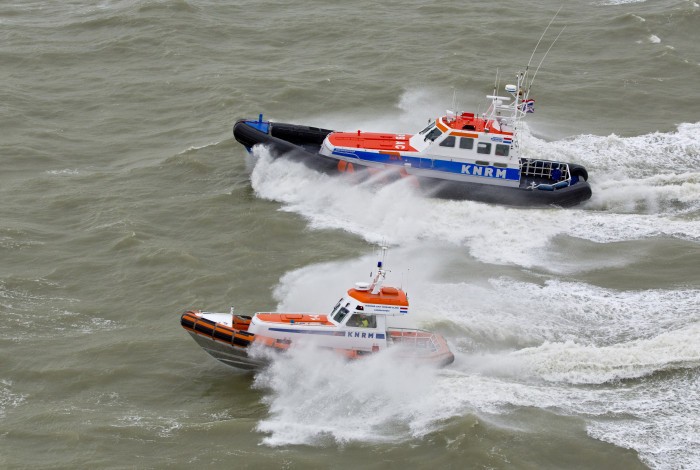The current fleet of the Royal Netherlands Sea Rescue Institution (KNRM) includes lifeboats from 1991 and onwards. The oldest is therefore almost thirty years old. The ships are good, but the costs of maintenance and the risk of failure are increasing. That is why the organisation now presents an ambitious replacement plan between now and 2035.
With 75 lifeboats along the coast, the Royal Netherlands Sea Rescue Institution (KNRM) is available day and night for emergencies at sea. The lifeboats vary in length from five to twenty metres. A large number of these boats can even be deployed at wind force 12. For these reasons, these vessels must meet the highest standards and be in top condition.
During the planning process, careful consideration was also given to the places where lifeboats are now stationed and whether changes are necessary to meet the requirements of rescue capacity in an area. This analysis has not led to any major changes, with the result that the entire fleet will be renewed in almost unchanged form.
Voluntary contributions
The KNRM is a rescue organisation that exists entirely thanks to volunteers. On the one hand the voluntary crews, on the other hand the donors who support the KNRM with a voluntary contribution. The rescue work is free of charge and is paid for by donations from rescuers and donors. The KNRM has been doing this since 1824 without any government subsidy, but fulfils its role for the government and especially for everyone who goes into the water.
Director Jacob Tas is very proud of this: ‘Our current rescue fleet has been paid for entirely out of large donations and inheritances from very committed individuals and companies. Out of gratitude, the lifeboats therefore also bear the name of the benefactor. We hope to be able to do the same with the future lifeboats. The financing of some of the new lifeboats to be built has already been pledged, sometimes in a will, but also by a large donation from a donor. We call them our rescuers ashore. The first new lifeboat is already under construction and will come into service in 2021.’
EUR 5.5 million a year
The new lifeboats to be built range from EUR 50,000 to as much as EUR 3 million each. That means a cost of over EUR 5.5 million a year for fifteen years in a row. The KNRM is confident this money can be raised over the next fifteen years, but this will require recruitment campaigns and activities. With this, the KNRM is investing in the future for a safe sailing area in the Netherlands.
‘We owe it to the seafarers and water sports enthusiasts to use all our resources to help and rescue if necessary. We owe it to our voluntary lifeboat rescuers to provide them with the best equipment so that they can set sail safely and come home safely,’ concludes Tas.








